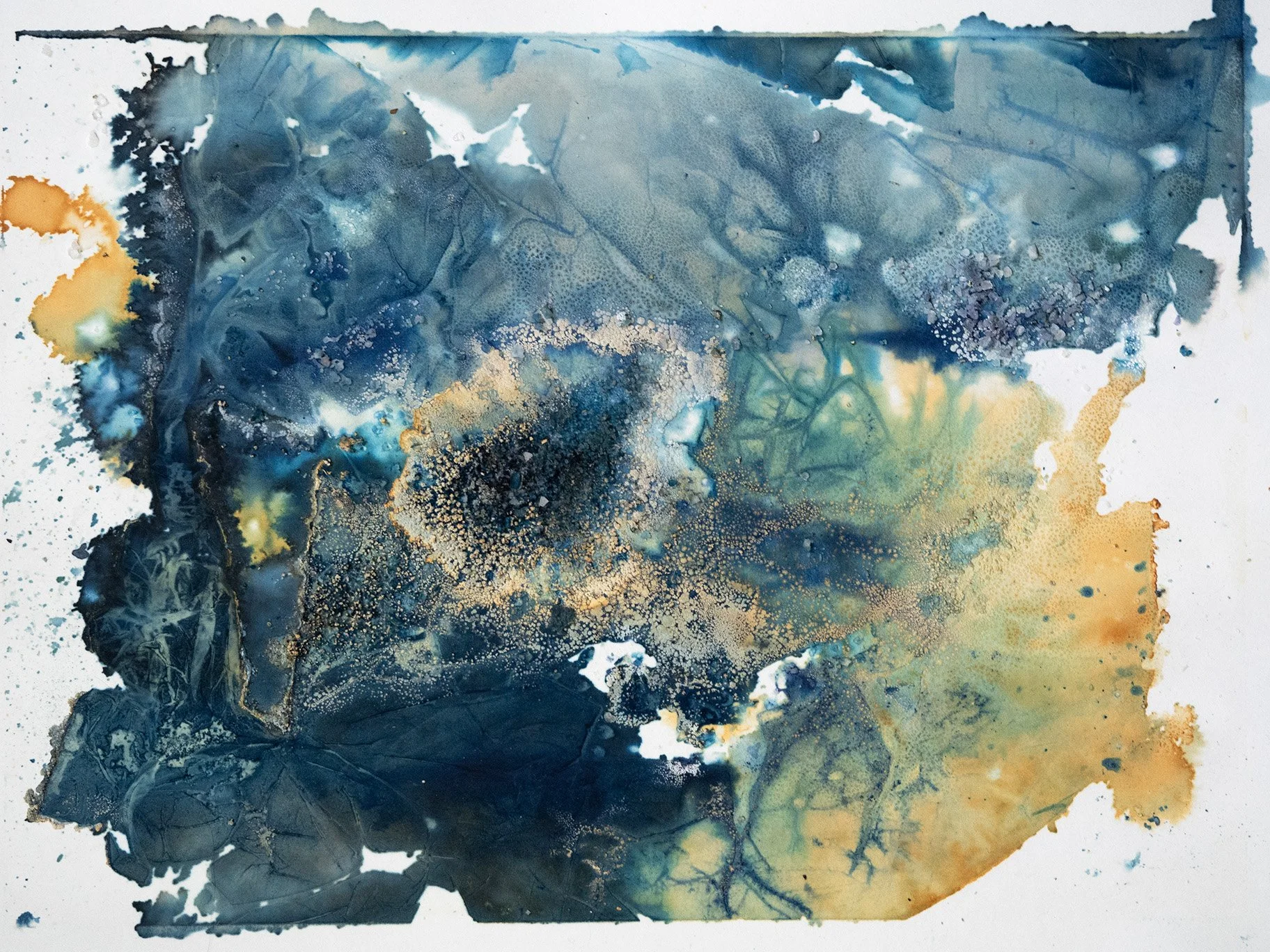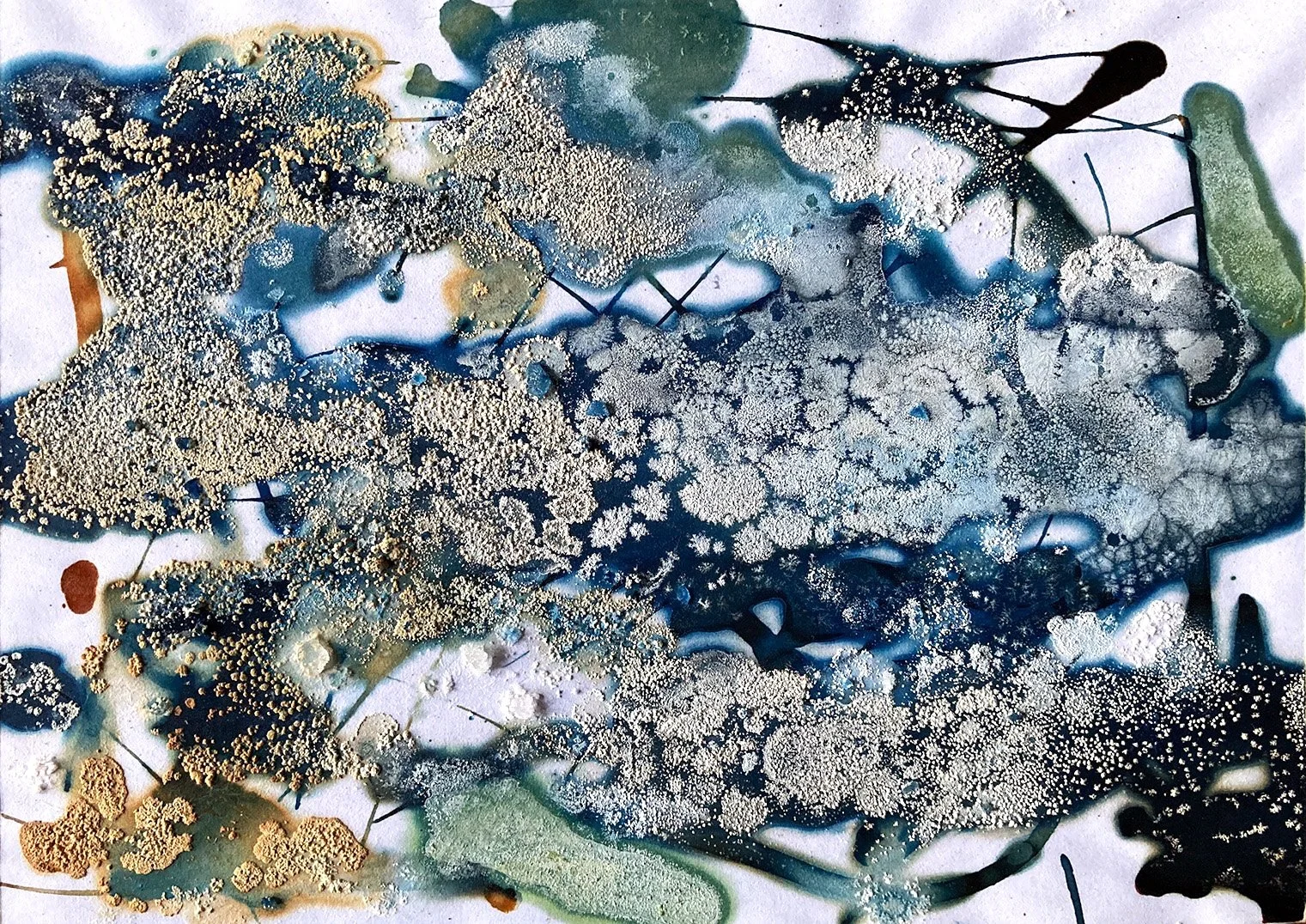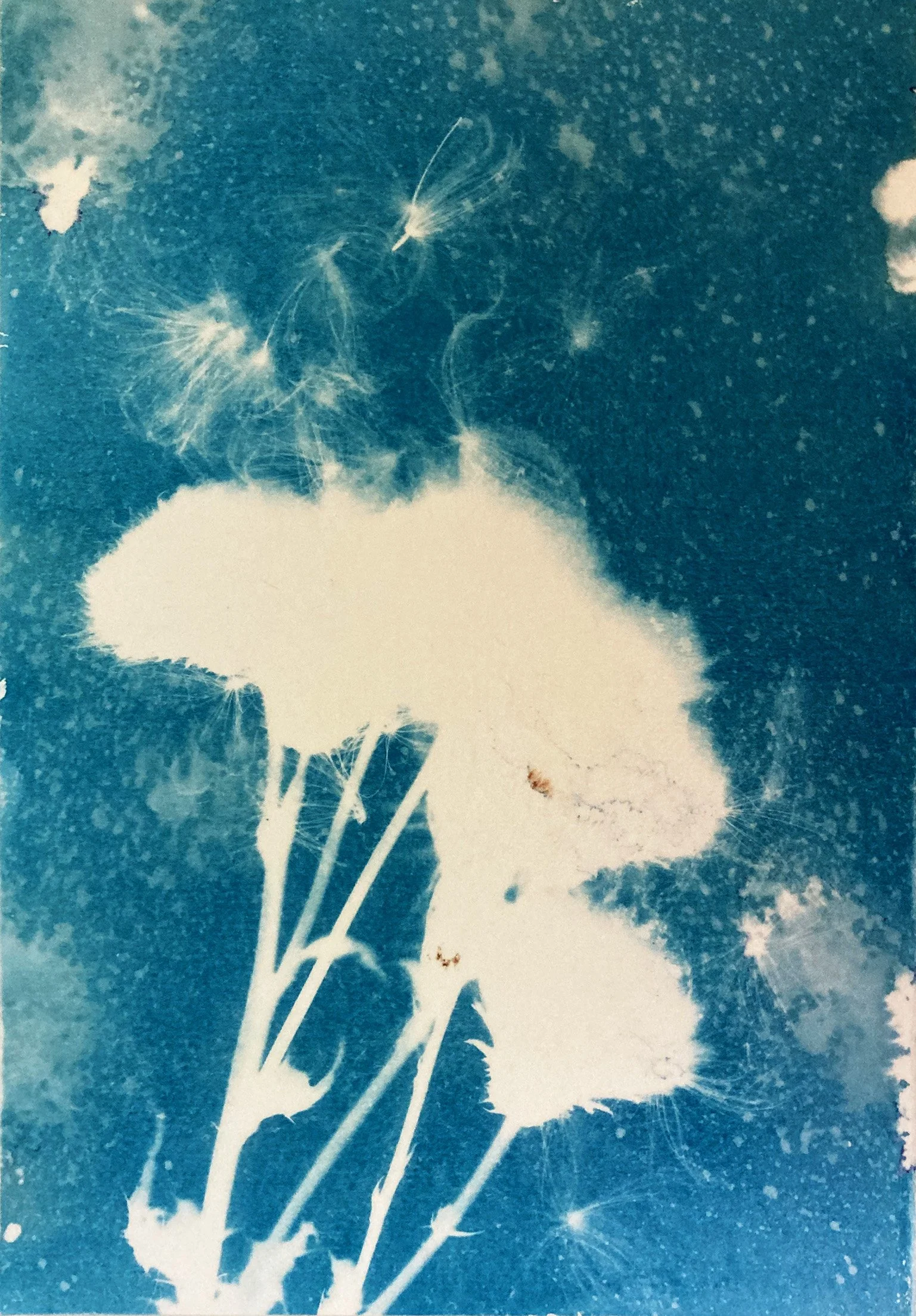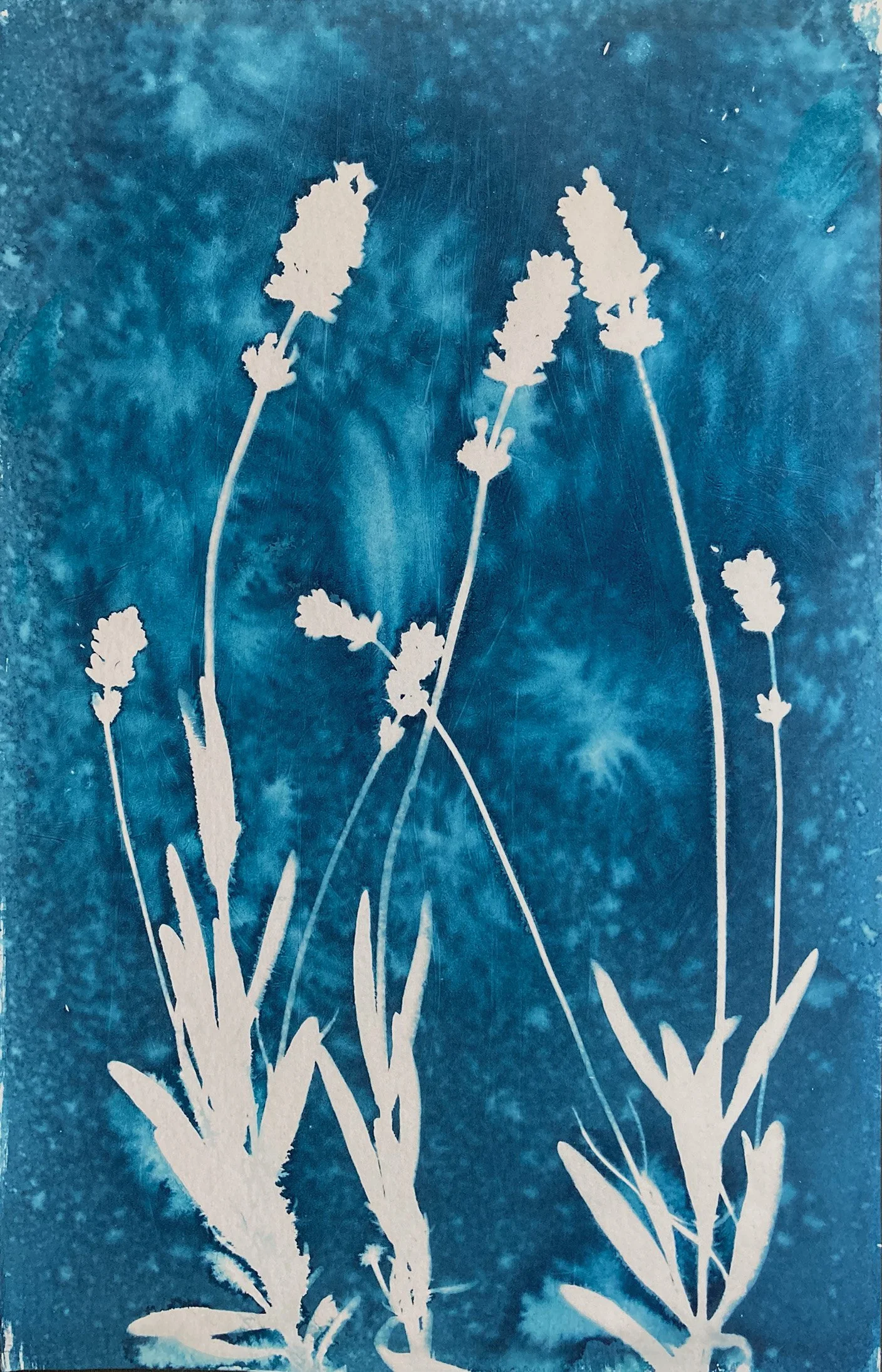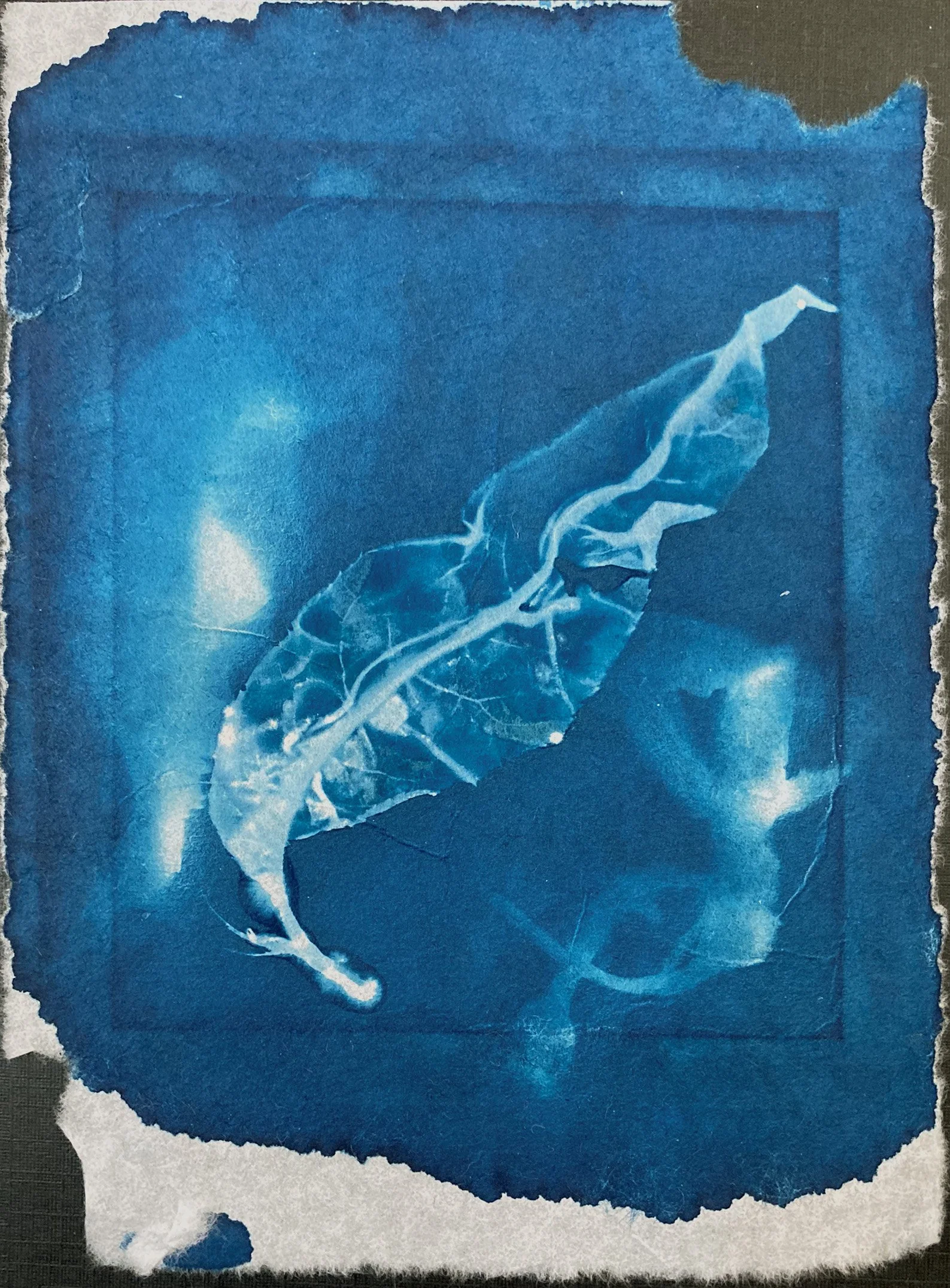As the images here are produced by not pre-mixing the chemicals, this allows for the element of chance to become involved in the process, with the artist unable to predict exactly how the image will evolve. As these pieces are not fixed it is probable that the artworks will continue to evolve and change over time.
Experimental Cyanotypes
Cyanotype Photograms
Creating photograms is an interesting and exciting process. Many variables can affect the outcome and no two images can ever be the same. After coating the paper with the cyanotype solution — usually left to dry — objects or a negative image are placed on top, often weighted with glass or similar before exposure to UV light in the form of daylight.
The amount of detail that can be captured with this process can be quite surprising. It is also possible to manipulate the effects by the application of salt, a spray of water or other media. Once fixed the photograms can be toned, for example with green tea.
Working in situ can be another interesting idea as the images become reliant on the material available and the prevailing weather conditions (such as in the last two images).
Macro Images of the Cyanotype Process
I am fascinated by the interesting effects that can occur during the cyanotype process, and am able to capture these by using a macro lens and digital camera. Once captured these images can be further developed and modified to create exciting digital images.
